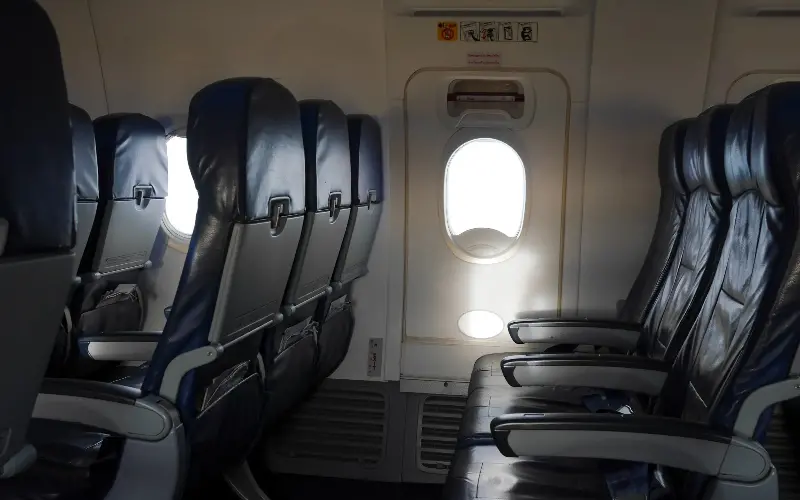
The survival of Vishwash Kumar Ramesh in the Air India crash is being named the “Miracle of Seat 11A”, and much has been made of the fact that he had been sat beside the exit row. But are some plane seats really safer than others?
Airline manufacturers insist not. They say that observing seat-belt signs and taking the brace position are the two things that will increase your chance of survival in an accident.
Studies, however, suggest that there could be some deeper science into which seats come with a higher probability of survival in the event of a crash.
The benefits of sitting beside an emergency exit
Full details of Vishwash Kumar Ramesh’s survival are not known, although when interviewed by local journalists in the aftermath of the crash he described being surrounded by bodies before standing up and climbing out of the plane via the emergency exit.
Seat 11A is a front-row economy class seat, located directly next to an emergency exit on an Air India Boeing 787-8 Dreamliner. There are also emergency exits located at the front, middle and rear of the plane.
The fact that Mr Ramesh was in seat 11A, directly next to an emergency exit, would have certainly improved his chances of survival having lived through the immediate impact of the crash.
A University of Greenwich study, commissioned by the Civil Aviation Authority, checked the seating locations of 2,000 survivors in 105 accidents worldwide. They found that passengers who survived the immediate impact of a crash but were sitting more than six rows from the exit were less likely to live.
Are wing seats marginally safer?
Popular belief has it that sitting near the wings of an aircraft may increase your chance of survival, given that these seats are structurally reinforced. This could also have improved Mr Ramesh’s chances of survival, given that seat 11A is located within the “wing box” section of the plane.
Professor Edwin Galea, Director of the Fire Safety Engineering Group (FSEG) at the University of Greenwich, told The Telegraph: “The physically strongest part of the aircraft is the part of the fuselage where the wings are, called the wing box. It’s where the wings join to the fuselage. That’s the strongest part of the aircraft because there’s the most structure there.”
However, the fact that an aircraft’s fuel supplies are stored within the wings could make this a more dangerous place to be sitting, depending on the circumstances of a crash.
Is the back of the cabin really safer?
Some studies suggest that you are most likely to survive an air crash if you are sitting towards the back of an aircraft.
According to a National Transportation Safety Board (NTSB) investigation of 20 crashes since 1971, that featured both fatalities and survivors, passengers sitting towards the rear of the cabin had a 69 per cent chance of survival.
Those sitting at the front of the plane had a 49 per cent chance, while those sitting around the wing had a 59 per cent chance.
This tallies with another study by the Federal Aviation Authority (FAA) which looked at crashes from 1985 to 2000 and found that survival rates were 62 per cent at the front of the cabin, 61 per cent in the middle, and 68 per cent at the back of the plane.
Explaining these percentages, MIT aeronautics and astronautics professor John Hansman describes the front of the aircraft as being a bit like a “shock absorber” in certain crash scenarios.
MIT ran a real-world simulation of a Boeing 727 plane crash in 2012, with an aircraft full of dummy passengers in a remote part of the Sonoran Desert in Baja California, Mexico. The experiment was broadcast live in a Channel 4 programme called The Crash.
The simulation found that all first-class passengers would have died in the crash, with the passenger in 7A catapulted 500ft from the plane. The people in the middle of the plane would have suffered broken bones, while the people in the back of the plane would have walked away alive.
Why the middle seat is preferable
A report by the Federal Aviation Authority (FAA) found that the middle seat comes with an increased chance of survival. Assessing disasters from 1985 to 2020, the FAA found that passengers sitting in the middle seats of the back row had a 28 per cent fatality rate, making it the safest place in the plane.
It could be that passengers in the middle seat are partially protected by those either side of them, who will absorb some of the impact of the crash. In addition, aisle seats are more likely to suffer from falling debris from the overhead lockers during a crash, while passengers in window seats could experience the longest waits before evacuating an aircraft.
A sense check from an aviation expert
Professor Graham Braithwaite, Director of Aerospace and Aviation Cranfield University, stresses the incredible safety record of modern aircraft.
“All seats on modern jet aircraft are incredibly safe,” he told The Telegraph. “The accident record is incredible, especially if you compare it to other modes of transport like driving.
“The design of the seat and even the fixtures around them must meet strict crashworthiness standards as well as flammability standards. The space around exits and the distance between a seat and an exit is also tightly controlled.
“We shouldn’t forget the role of the cabin crew too – essential in an emergency where we know their commands can make all the difference.
“Passengers can contribute to their own safety by reading the safety card and listening to the crew briefing. In an evacuation, leaving their luggage behind will help their survival as well as those behind them.
“While today’s accident would be very difficult to survive, it is unusual. The majority of aircraft accidents are survivable these days. This is partly because every time an accident happens, we take the time to investigate – not to apportion blame or liability but to learn lessons to prevent recurrence.
“This is cultural and something that has helped make aviation safe.”
